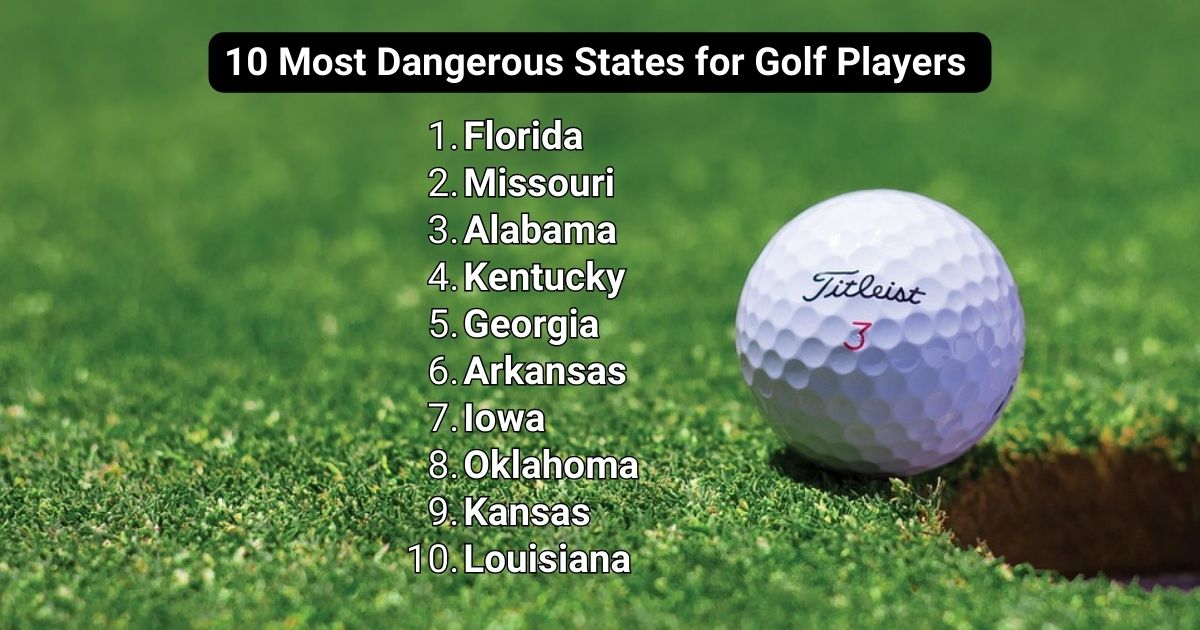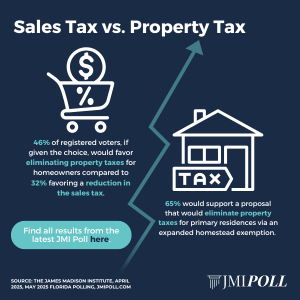A new study has revealed the most dangerous states for golf players, and it’s bad news for Florida golfers.
The study uses a range of sources, from the chance of a lightning strike, the frequency of a cart accident and historical weather data to produce the ranking. A personal injury expert offers advice on staying safe if a disaster strikes your golf course.
Florida has been identified as the most dangerous state for golf players, as new data sheds light on the unusual accidents more likely to befall golfers.
The study, conducted by Las Vegas personal injury lawyers H&P Law, ranked every state based on a range of golf related dangers, including the number of lightning strikes per square mile, the average annual snowfall and poor weather conditions, and the number of golf cart fatalities.
This data was used to create an index ranking, where each state was assigned a score out of 100, with a higher score indicating greater danger for local golfers.
It turns out that Florida is the most dangerous state for golfers, with an overall index score of 68.5 out of 100. The national average score was 38.6, meaning golf players in the Sunshine State have a 77.4% higher chance of being involved in an accident than other states, and are most likely to be struck by lightning while playing.
In second place, Missouri scored 64.8 out of 100, 68% higher than the national average. The state also scored 91.7 out of 100 in the golf cart accident ranking, meaning golfers in the state should be particularly wary when using the carts.
Alabama is in third place, with a score of 63.7 out of 100. Golfers in Alabama are therefore 65% more likely to be involved in an accident on the course than the national average.
In fourth place is Kentucky, where golfers are 63% more likely to be injured on the golf course than the average American, with a score of 62.9 out of 100.
Georgia is fifth, scoring 57.7 in the ranking. The risk of golfers in Georgia being involved in a golf-related accident is 49% higher than the US average (38.6 out of 100).
Arkansas claims the sixth spot, with an overall score of 57.3 out of 100, 48% above the national average.
Golfers in Iowa are 42% more likely to be involved in a golfing accident than the average US golf player, as the state lands in seventh place with a score of 54.8 out of 100.
In eighth place is Oklahoma. The state scored 54.5 out of 100, which is 41% above the national average.
In ninth, golfers in Kansas are 40% more likely to be in an accident on the golf course than other states. Kansas scored 54.18 out of 100 in the index ranking.
The final state to make the top 10 is Louisiana, with a score of 54.17, just below Kansas. This is 40% higher than the national average accident rate for golfers. Louisianan golfers are also the third-most likely to be struck by lightning in the US.
On the other end of the scale, Hawaii is the safest state for golfers, scoring just 8.5 out of 100. This score is 78% below the national average of 38.6, meaning golf players in the state are far safer than the average American.
Matthew Pfau, a partner at H&P Law, commented on the findings, offering advice to golfers in the most at-risk states:
“Golfers in states like Florida, Alabama, and Missouri face unique challenges on the course. In areas prone to frequent lightning and severe weather, hilly courses and limited shelter make golf players particularly vulnerable during sudden storms, highlighting the need for awareness of the dangers.
“You should never play golf in a lightning storm, but if you are caught out on the course when lightning hits, there are some ways to increase your safety. Firstly, you should put your club down and do not sit in your cart – a metal stick or vehicle serves as a conductor.
“If you have time before the lightning hits, you should head to the nearest well-built shelter, such as a clubhouse or bunker, and remain there until the storm has passed, or thirty minutes after the last clap of thunder. Avoid sheltering near tall structures like trees, flagpoles or fences, as these are more likely to be struck.
“If you cannot reach shelter, find the closest low open ground, avoiding water, and crouch down with your head between your arms, making the least possible contact with the ground. The aim is to make yourself small, and touch as little as possible to avoid conducted energy, as this is more common than a direct strike.
“Golfers are uniquely vulnerable to lightning, but checking the weather forecast in advance and following these safety tips should help you reduce risk and play without worry.”
Methodology and sources:
A total of 8 factors were used to compile the index. The raw data for each factor was cleaned, checked, and standardized on the same scale from 0 to 10, where 0 and 10 represent the worst and best values present in the data, to allow for accurate comparison between factors. Factors for which a high score would be negative were subtracted from 10 to invert their scoring.
A weighting was then assigned to each factor reflecting its importance within the analysis.
Once the weightings were assigned, the total score for the factors was calculated, producing an overall index score out of 100 for each entry, upon which the final ranking is based.
The factors used to compile the index were:
- Lightning per sq. mi (2023) AQI of top 10% worst days
- Median air quality index
- Mortality rate due to animals, plants, forces of nature and natural disasters
- Average annual snowfall (in)
- Average temperature (f)
- Average annual precipitation (in)
- Golf cart fatalities per million residents (2018-2022)
The full ranking is available upon request.












